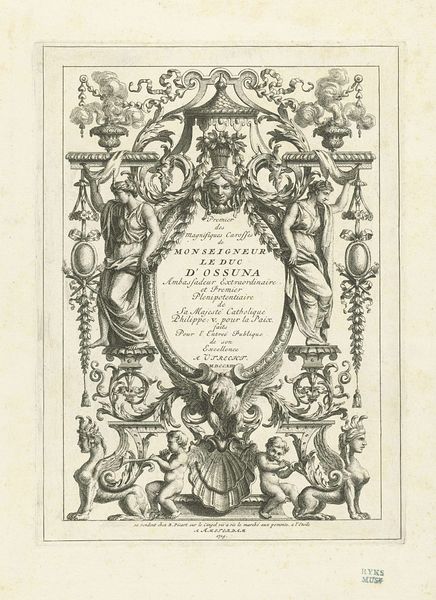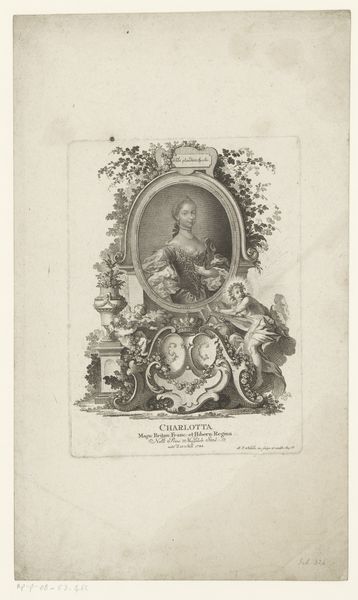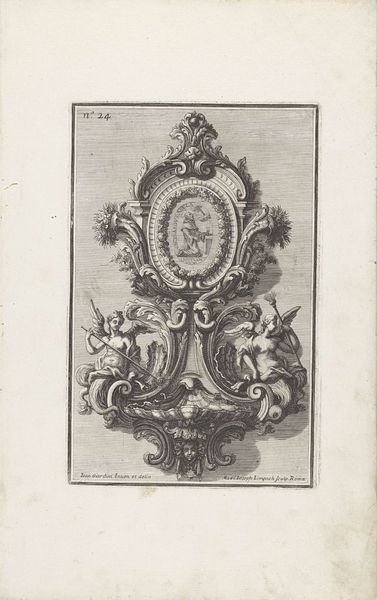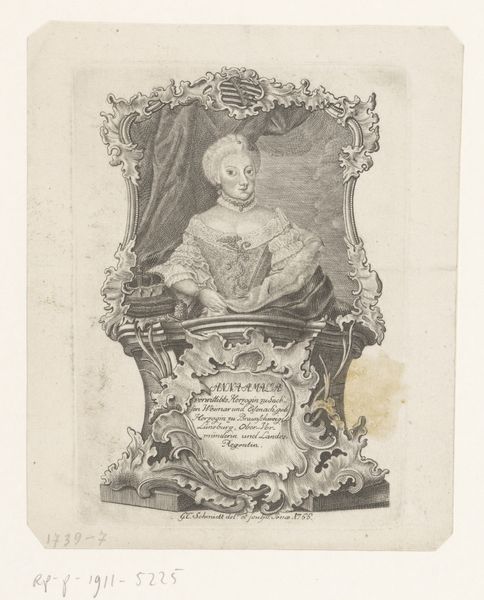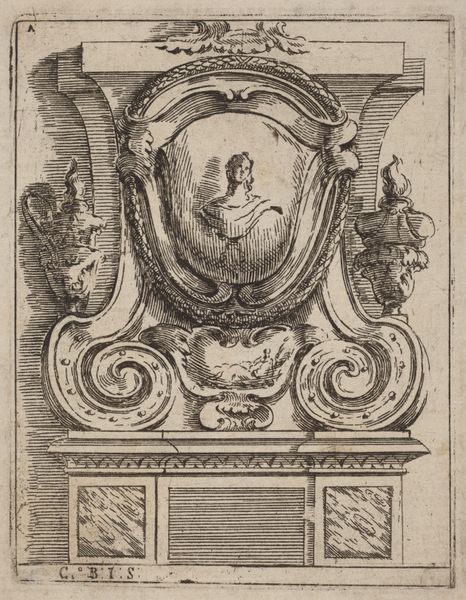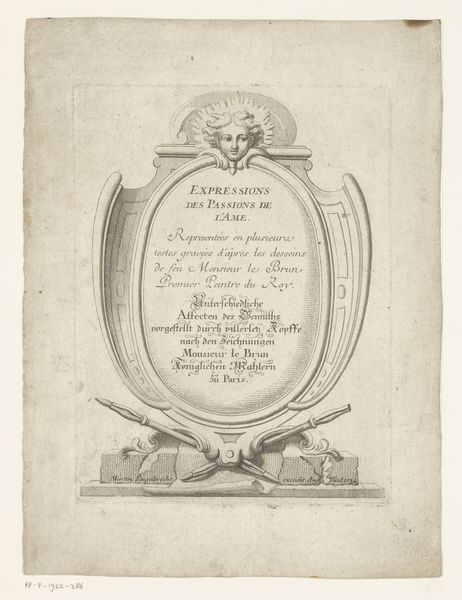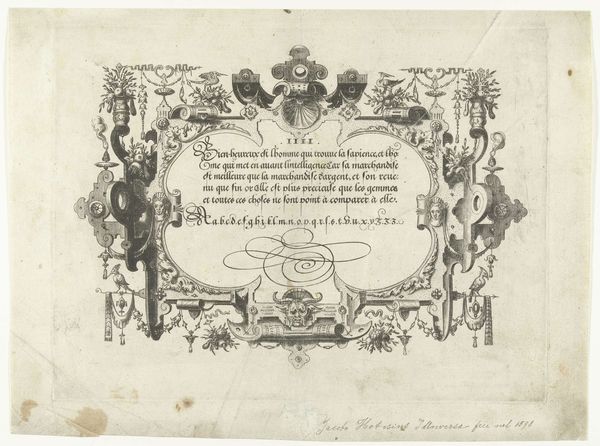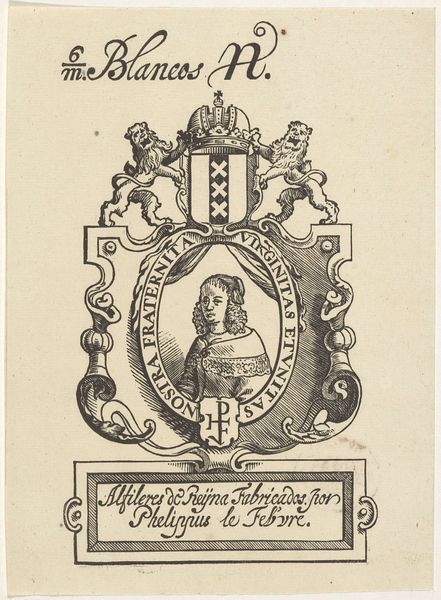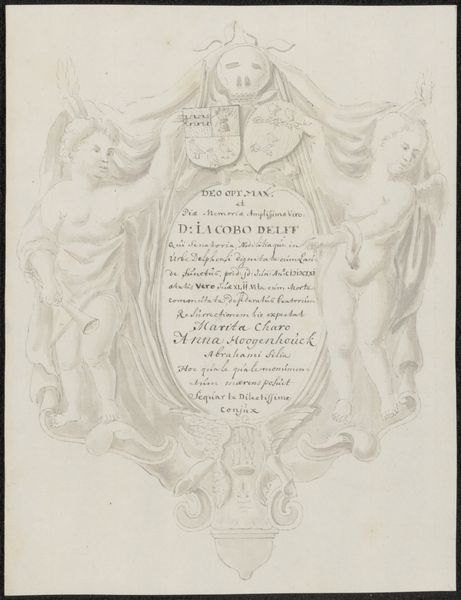
Titelprent met cartouche met een putto, twee panterkoppen en een schedel van een ram 1646
0:00
0:00
print, etching, engraving
#
allegory
#
baroque
# print
#
etching
#
italian-renaissance
#
engraving
Dimensions: height 235 mm, width 186 mm
Copyright: Rijks Museum: Open Domain
Curator: This is a title page designed by Stefano della Bella in 1646. It's an etching and engraving now held at the Rijksmuseum. Editor: It’s striking! That combination of a playful putto with these rather fierce panther heads and, unexpectedly, a ram skull creates such an intense juxtaposition. What was della Bella trying to communicate here? Curator: Well, let’s consider the production. Della Bella was a Florentine artist working in Paris, primarily known for his printmaking. He was prolific, producing numerous designs for ornament and theatrical sets. This particular print served as the frontispiece for a collection of his "capricci," or imaginative, whimsical designs. Editor: Right, and that title itself, "Raccolta di Varii Cappricii" – Collection of Various Caprices, it speaks volumes! It's interesting to consider the cultural memory embedded in each element. The putto, obviously a classical symbol of innocence and love, but those panthers—they're more Bacchanalian, hinting at the wild, uncontrolled aspects of life. And the ram skull, a memento mori if ever I saw one. Curator: Precisely. So you see a complex message embedded in what at first seems like mere ornamentation. Look at the fine lines achieved by etching and engraving. Notice the texture and value ranges – how skillfully he renders those diverse surfaces: the animal fur, the cherubic skin, the weathered bone. Consider too the publisher, Langlois, aiming to present della Bella as an innovator in ornament, his designs being sold to a wealthy and discerning clientele. Editor: Yes, the material quality reinforces that elite appeal. And isn’t it intriguing that della Bella uses the imagery of classical power and decay to frame...caprice? Is he suggesting even something so fleeting and playful has its darker counterpart or lasting legacy? The framing really draws me into reading the textual matter like an allegorical riddle, with the date acting almost like a revelation. Curator: He very deliberately made each part integral to the whole effect of the artwork. By closely examining its visual language, we begin to unpack the intentions and societal values circulating around its initial appearance. Editor: Indeed, the artwork reveals itself when we start piecing the process, production, and the visual iconography together!
Comments
No comments
Be the first to comment and join the conversation on the ultimate creative platform.

